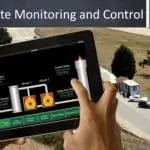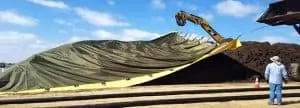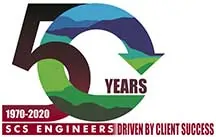

Organics processors, composters, haulers, regulators, academics, organics waste management professionals, sustainable community organizations, and nonprofits will join the conversation about New Jersey’s organics management practices. The Summit will feature experienced industry professionals, academics and regulators on topics of:
SCS Project Director Greg McCarron is speaking at the Funding and Operating Climate Friendly Organics Businesses Panel 4 (4:00 – 5:00 pm). Be sure to visit the exhibitors and learn about some great organics recycling businesses in New Jersey!
Greg McCarron, Vice President, SCS Engineers
Managing hefty organic waste streams and associated costs while reaching lofty sustainability goals are among urban jurisdictions’ toughest pursuits. Some municipal solid waste operators set up local compost sites to help achieve these ambitions. They are finding other benefits along the way—from new, valuable products with a strong, local market to a way to cut out multiple complex steps involved in sending compost out of town. They are regenerating depleted soils, and some are bringing their shuttered landfills back to life with another purpose: home to these new facilities.
But how do you make compost projects work with residential neighborhoods and businesses close by, limited space that’s at a premium, and other challenges of high-density urban and suburban communities?
An urban compost success story.
The answer varies depending on each jurisdiction’s special needs and characteristics. New York City is one example of a compelling metropolitan success story, with over 200 drop-off sites and seven community-scale compost programs or facilities across its five boroughs.
SCS Engineers’ Vice President Greg McCarron helped design two of that flourishing city’s facilities, including a layout and design overhaul of one of them, located near Manhattan. The project goal was multifold: keep pace with the growing demand for finished compost and food scraps management and do it within a compact facility footprint –one-third of an acre.
Known as the Queensbridge project, it operates under the Queensboro bridge, next to six-story residential towers, a hotel, and other commercial development. So, maintaining tight odor control is a paramount priority. It’s a job that takes technical skills mastery and a robust design; the facility can process up to 1,000 tons of rapidly decomposing food scraps a year, which are mixed with leaves and woodchips.
GORE cover for odor control and process control.
“The proximity to a dense residential neighborhood allows little tolerance for issues such as odors, pests, and dust, and we designed the site with this in mind.
One of our most important strategies was to install a second SG/GORE cover [there was already one in operation]. It’s an in-vessel system with a semipermeable membrane, so it traps odors and other emissions such as dust and volatile organic compounds (VOCs) and prevents pest issues by encapsulating all fresh food scraps,” McCarron says.
The technology also sheds rainwater as clean water and provides process control, enabling a higher throughput on a smaller footprint.
Designing an efficient stormwater management system is a critical part of the plan, entailing site grading and installing drainage pipes. The team ensures the collection of contact water that touches the initial compost piles via an in-ground trenching system, which also delivers air to the composting process. Contact water is recycled back into the composting process.
Stormwater control features prevent run-on to the facility site. And clean stormwater is routed away from the in-process compost material.
Another situation called for special attention: existing utilities nearby, including high-voltage electric lines and high-pressure natural gas lines.
“It required due diligence to ensure the facility’s infrastructure would not disrupt the utilities’ operations. We looked at site surveys, prepared design drawings, and dug construction test pits to make sure we would not run into these large lines during installation of the below-grade components of the aerated static pile system,” McCarron says.
Between these build and design strategies and other tweaks, Queensbridge has continued to grow its operations while melding with the active, surrounding community. The outcome? Doubled processing capacity and improvements to access and overall workflow while managing contact water and stormwater in a better manner.
SCS Senior Project Professional Ryan Duckett finds municipalities like the control they gain when they opt to run their own facilities rather than transfer their organic waste long distances. Some haul these heavy, wet loads more than an hour away, and common organic waste hauling methods can be inefficient on a pound-for-pound basis. Besides having tighter reins on monetary and time investments, their local governing authority can allow easier rezoning of parcels or other changes to permit new activity.
Aerated static piles for faster throughput.
For composters in more densely populated areas such as urban municipalities, Duckett typically suggests bunker aerated static piles (ASP), which involve mechanically pushing or pulling air through organic waste.
“Aerated static piles have faster throughput than some other methods because you run blowers, so you constantly inject air, which speeds decomposition. In urban areas with limited real estate, accelerating production in a controlled manner is important. It’s how you scale and produce a quality product with what land resources you have,” he says.
Though having small, narrowly spaced parcels can actually facilitate economies of scale when it comes to residential collections. With hundreds to thousands of households in close proximity, the process tends to be quicker per customer and more efficient.
Still, collections are typically the most expensive part of the compost equation, so Duckett does feasibility studies to model the costs and benefits of different approaches to recover organic waste.
“If you include food scraps, you have to consider whether you want curbside or front door collections or if you prefer drop-off sites, keeping in mind that a third bin at each home will add expense. Some municipalities add a fee,” he says.
Space can be an issue; not all urban and suburban communities feel that they have enough room for another bin. Sometimes the answer is to collect food scraps from porches in buckets, though it can be more time-consuming and labor-intensive than curbside.
Operational considerations span more than identifying the best collection approaches.
“For example, sometimes in our evaluations, we find efficiencies through methods to accomplish more than one function in one stroke, perhaps co-shredding leaves and branches at the same time. Or using compostable bags instead of plastic ones that require a separate debagging operation.
Or we may make suggestions around the deployment of equipment, sometimes replacing a truck or tractor tow-behind compost turner method with a self-propelled windrow turner. It’s a one-time investment that could save time and money in the long run,” Duckett says.
Early planning is a consistent theme.
Preliminary work should include market research to identify the quality and quantity of available feedstocks. And it should involve stakeholder engagement with potential feedstock suppliers, haulers, city departments, and citizens.
“You must make sure everyone is on board because there are a lot of considerations, such as estimating the participation rate to design the size and type of processing facility. Mitigating contamination also takes forethought. It’s a big issue in the compost world.
Among Duckett’s recommendations to deter contamination from the start is implementing a ban on plastics mixed with yard waste. And setting up to provide paper in lieu of plastic bags for collecting materials, as plastics are a big problem for composters.
Duckett does site visits before going into design mode in keeping with the mantra of planning ahead. He’s looking from a technical lens for details to address to circumvent barriers later.
“One issue we give special thought to is that there are a lot of rules around buffers. Buffers could be from schools, playgrounds, adjacent residents, or water bodies, among community resources. We have to keep in mind that these are not potentially usable areas when planning the layout and design. So, we look at available space after accounting for them,” he says.
There are also rules around the proximity of compost pads to water tables, so the team is heedful of groundwater fluctuations. As important are soil characteristic studies to determine if pad construction will require outside soil or a different pad type. And key to the design process is evaluating stormwater management systems, as McCarron exemplifies with the Queensbridge project.
The considerations are vast, with no single right answer, but quite a few options exist to make composting work well in highly populated spaces. Regardless of the circumstances, local composting can provide burgeoning communities a viable, sometimes profitable, way to manage what typically is at least 30 to 40% of their waste stream. And keeping the processing site at home, close to the generator, comes with multiple benefits beyond.

Ryan Duckett, PE, is a Senior Project Professional experienced in solid waste research and consulting. He serves as a project engineer for a variety of design projects, financial analyses, feasibility studies, and overall planning efforts in support of solid waste assets such as collection, transfer stations, recycling facilities, and landfills. He is a Professional Engineer licensed in Virginia and North Carolina and has a BS in Environmental Engineering and an MBA.
$2 million in cooperative agreements is available for local governments to host Community Compost and Food Waste Reduction (CCFWR) pilot projects. The cooperative agreements support projects that develop and test strategies for planning and implementing municipal compost plans and food waste reduction plans. They are part of USDA’s broader efforts to support urban agriculture.
USDA’s Office of Urban Agriculture and Innovative Production will accept applications on Grants.gov until 11:59 p.m. Eastern Time on July 16, 2021. Projects should span two years, with a start date of September 25, 2021, and a completion date of September 25, 2023.
Local governments may submit projects that:
NRCS will assist in conservation-related activities.
Priority will be given to projects that include economic benefits; provide compost to farmers; integrate other food waste strategies, including food recovery; and collaborate with multiple partners.
The deadline for applications is July 16, 2021.
Project Example: The Department of Sanitation of New York and nonprofit Big Reuse establishes food scrap drop-off locations while New York City Parks Department is diverting wood chips and leaves from landfill disposal to create compost. GreenThumb, Brooklyn Grange, Hellgate Farms, Gowanus Canal Conservancy, and other urban farms distribute the compost for food production in the boroughs of Queens and Brooklyn, diverting approximately 600,000 pounds of food scraps and green waste from landfills and providing 350 cubic yards of compost to food producers.
Get Started with SCS’s ASP Composting Pilot Program
• Low-cost opportunity to test ASP composting feasibility
• Ability to test different feedstock mixes
• Assess the quality of the finished compost
• Assess odor control and process control
• Test footprint is 5000 sqft or less on your site
Webinar
A pre-recorded webinar will provide an overview of the cooperative agreements’ purpose, project types, eligibility, and basic requirements for submitting an application. The webinar will be posted at farmers.gov/urban.
More Information
Questions about this cooperative agreement opportunity can be sent to .
The Office was established through the 2018 Farm Bill and is designed to be a USDA-wide effort. Representatives from agencies throughout USDA play a critical role in successfully servicing urban customers. Other grant and engagement opportunities are available in addition to the CCFWR agreements. More information is available at farmers.gov/urban.
Additional resources that may be of interest to urban agriculture entities include NIFA grants, FSA loans, and AMS grants to improve domestic and international opportunities for U.S. growers and producers.
Virtual Conference on April 15, 2021, recording on YouTube
Recorded at the Virtual Conference on April 15, 2021, this recording is available online.
Moderated by Michelle Gluck of Cornell Cooperative Extension Dutchess County, the panel discusses waste reduction, composting, anaerobic digestion, compost use, carbon sequestration…so many avenues to reduce climate impacts through organics management.
We’ll hear about New York State’s Climate Leadership and Community Protection Act, the progress of its waste advisory panel, and from a Climate Smart Community on how they’re planning to manage their organics with greenhouse gas emissions in mind.
Panelists include:
Suzanne Hagell, Climate Policy Analyst, New York State Department of Environmental Conservation
Molly Trembley, Environmental Engineer, NYSDEC
Greg McCarron, Vice President, SCS Engineers
SCS Engineers launched a successful new program enabling waste managers and facilities to pilot test Aerated Static Pile (ASP) composting before making a capital investment. There is a high interest in organic materials management (e.g., composting, anaerobic digestion), driven by state and local regulations for diversion of organics from disposal facilities and the desire to reduce carbon emissions.
The organic fraction of any waste stream is successfully compostable, including materials, such as food scraps, yard trimmings, food processing by-products, and biosolids. The organic fraction of the municipal waste stream, which includes food scraps, is about 30 percent by weight, so it is possible to divert a significant amount from landfilling. SCS helps waste managers evaluate their organic waste streams and whether composting is a viable solution for their circumstances. ASP composting is often the preferred method because it is fast, cost-efficient, and controls odors and emissions effectively.
SCS owns a covered ASP compost system that is mobile and can be set-up on sites within an area of 50 feet by 100 feet, or less. In the covered ASP compost system, process and odor control is pro-active with a shorter composting period. A pilot test allows waste managers to assess composting and to see if it is the right fit for their situation. The ASP system processes material batches in two months. Additional batches or “recipes” can test in 2-month intervals.
SCS’ services include the setup and operation of the mobile ASP system. The system can compost up to 50 tons of targeted material per batch. SCS provides all equipment and consulting services, along with the test reports with the process and lab data. The resulting report and data are useful information to supplement a feasibility study (e.g., the quality of the end-products for sale or community use).
Greg McCarron of SCS Engineers comments, “Virtually every town can develop and support a compost program that is locally based and directly beneficial to their community. Our mobile ASP system can provide proof of concept for our clients and the information that allows managers to make informed decisions.”
Covered ASP Pilot Program details.

SCS is receiving the Gold Business Achievement Award for a Large Environmental Firm, for outstanding business performance in 2019. We largely attribute our organic growth to our clients interested in Sustainable Materials Management (SMM) and renewable natural gas (RNG) services. Our SMM programs increase our clients’ solid waste management efficiencies, reduce waste, and support sustainable recycling, and our design and design/build facilities convert landfill gas, dairy digester gas, and wastewater treatment plant digester gas to RNG. In addition, SCS’s Geographic & Practice Area Expansion initiative in 2019 enables us to expand our professional engineering and consulting services for liquids management, wastewater treatment, and emerging contaminants from new offices in the South, Central, and Midwest regions of the United States.


The Environmental Services Division of the city of San Diego, in collaboration with SCS Engineers, is receiving the Composting Project Merit Award in recognition for the composting operation at the Miramar Landfill in San Diego. In collaboration with the City, SCS designed an innovative covered Aerated Static Pile (ASP) composting system that will divert 100,000 tons per year of organic waste from the landfill. The ASP became operational in August 2019 and will compost 40,000 tons per year into useful by-products (and has capacity for an additional 20,000 tons). It provides an enhanced stormwater control system, and will eventually run on renewable energy generated from the landfill. According to the StopWaste.com calculator, the upgrade reduces greenhouse gas emissions by the equivalent of removing 19,015 cars from the road.

In addition, the recent announcement of SCS’s ASP Composting Pilot Program is making headlines. SCS owns a covered ASP compost system that is mobile and can be set-up on sites within an area of 50 feet by 100 feet, or less. In the covered ASP compost system, process and odor control is pro-active with a shorter composting period. Pilot tests allow waste managers to assess composting and to see if it is the right fit for their situation. The ASP system processes material batches in two months. Additional batches or “recipes” can test in 2-month intervals.
“Managing air, water, and soil pollution prevention are driving state and local regulations,” said Bob Gardner, a Senior Vice President of SCS Engineers. “Offsetting as much of the cost by improving operations, lowering energy consumption, and switching to renewable energy resources is critical to our clients.”
About SCS Engineers
 SCS, an employee-owned environmental consulting and construction firm, is celebrating our 50th year in business. We are producing technologies and programs that lower industrial operating costs and reduce greenhouse gases for private and public clients who are establishing goals to reduce their environmental impact.
SCS, an employee-owned environmental consulting and construction firm, is celebrating our 50th year in business. We are producing technologies and programs that lower industrial operating costs and reduce greenhouse gases for private and public clients who are establishing goals to reduce their environmental impact.
Our technologies and programs are finding footholds in the agricultural, industrial, and manufacturing sectors as municipalities and companies aim to reach climate change goals without passing all of the expense to consumers. SCS clients entrust us with the management of more than 35 million metric tons of anthropogenic CO2e greenhouse gases every year. We collect and beneficially use or destroy enough to offset greenhouse gas emissions from 7.4 million passenger cars annually.